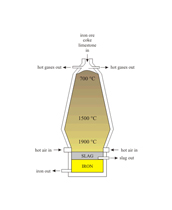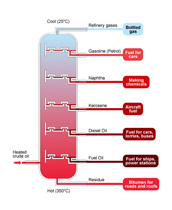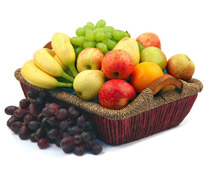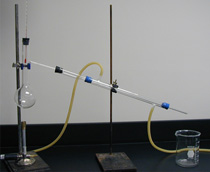

Manufacturing Processes
During your study of GCSE chemistry, you should have met several different manufacturing processes. In some cases, such as the blast furnace, you will have learnt about the chemistry from start to finish. In others, like the production of biofuels or margarine, you will only have seen a small part of the complete process. Manufacturing processes can crop up in the exams as complete questions or could be slipped in as just a single part of a larger question, so don't neglect this important part of your revision.
Manufacturing processes are simply how things are made. They rely heavily on an understanding of chemistry at some level. From toilet rolls to tinsel, from cars to CDs, everyday items need people to have some knowledge of how chemical reactions take place in order for the items to be made efficiently and safely. This knowledge also enables researchers to produce new useful materials, including medicines to fight diseases and cancer.
Two of the favourite topics used by examiners are crude oil and metals, but they also like to test your knowledge of thermal decompositions (usually associated with limestone). When revising crude oil, make sure that you understand fractional distillation and can identify the different fractions on a diagram of the industrial fractional distillation column. Make sure also that you appreciate that the column is cooler at the top than at the bottom and the crude oil is completely vapourised when being injected into the base of the column. The other manufacturing processes associated with crude oil are cracking and polymerisation.
You only need to know the basics of manufacturing processes involving metals. Iron is obtained from iron ore by reduction using carbon in a blast furnace. Copper is extracted using carbon and then purified using electrolysis. Aluminium is extracted by dissolving its ore (bauxite) in molten cryolite and subjecting the mixture to electrolysis. Other more reactive metals are extracted from their molten ores uing electrolysis. But the one thing that they have in common is that they are all obtained from their ores by reduction in one form or another.
Finally you have the chlor-alkali industry which is based on the electrolysis of brine. This produces hydrogen (which can be used in the manufacturing process that produces margarine - hydrolysis), sodium hydroxide and chlorine. A useful tip to help you remember about electrolysis is that hydrogen and metals are produced at the cathode and non-metals are released at the anode.
Ready for more?
not all...
quizzers. Try to win a coveted spot on our Hall of Fame Page.
















